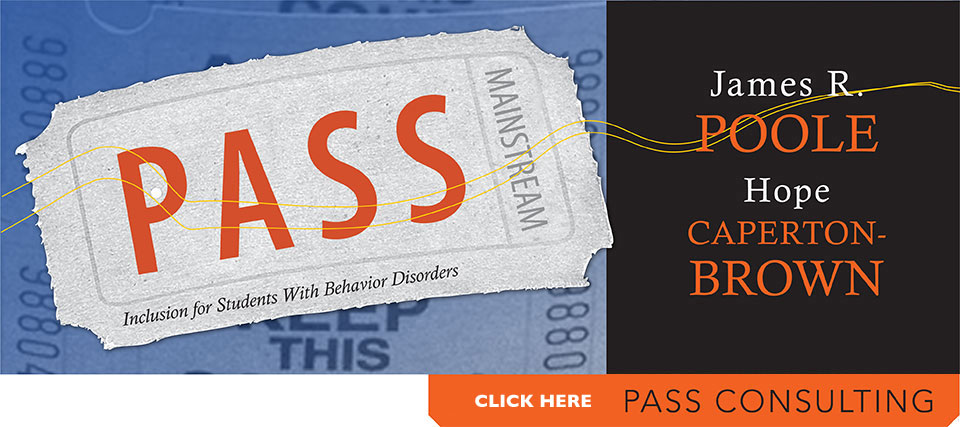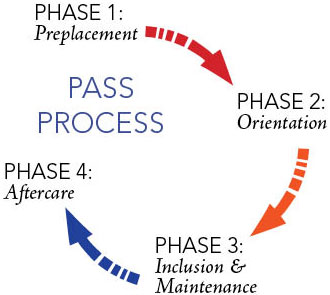


"PASS is a process for managing the behavior of students identified as behaviorally at-risk or emotionally/behaviorally disturbed. PASS incorporates a nonlevels-based, individualized approach that provides explicit teaching of behavioral expectations in mainstream settings. The program uses a Functional Behavior methodology with daily and weekly behavioral analysis to guide intervention."
The level of services students receive is fluid and dependent on their current behavioral needs.
PASS involves four phases of implementation:
- Preplacement
- Orientation
- Inclusion and Maintenance
- Aftercare
Phase 1: Preplacement includes activities prior to PASS placement, such as ensuring that less intensive and restrictive interventions have occurred, developing a Behavior Intervention Plan (BIP) targeting the 2–3 behaviors that interfere most with the student's academic and behavioral progress, and formally placing the student in PASS.
Phase 2: Orientation focuses on instruction. PASS specialists teach PASS classroom expectations, PASS monitoring and reinforcement systems, social skills in the area(s) targeted by the student's BIP, and academic work provided by the mainstream teacher. This phase is brief and individualized. These services are provided in the PASS classroom.
Phase 3: Inclusion and Maintenance moves the student from the PASS classroom into general education or resource settings. PASS specialists monitor student behavior on a schedule designed to meet individual student needs. Reinforcement of behavioral success is a key component of this phase, and social skills instruction/coaching continues. After a period of behavioral success with the Behavior Specialist providing monitoring, students move on to self-monitoring.
Phase 4: Aftercare encourages students who have successfully participated in PASS to sponsor students who are currently participating in Phases 2 and 3. This phase provides mentorship for students currently in the program and supports the sponsor's behavior change.
Students progress through the phases, beginning with a brief period of self-contained instruction in pro-social replacement behaviors and advancing to full inclusion with individually determined levels of monitoring and support from the PASS specialist. The length of time any student remains in each phase is determined by student progress as he or she participates in PASS activities.
Student movement through the second and third phases of PASS is not perceived as linear. Rather, the level of services students receive is fluid and dependent on their current behavioral needs. Students may, therefore, move from PASS monitoring back to the PASS classroom for a period of redirection and/or from PASS monitoring to self-monitoring. Data collection and behavior analysis inform the level of service provided throughout these phases.
Theoretical research and legal support for placing students with an emotional disturbance in inclusive environments derives from social learning theory of Albert Bandura (1977) and the social-ecological theory of Urie Bronfenbrenner (1989). Specifically, these theories emphasize the impact of environments (including peer groups) on behavior. Additionally, the program's practice of placing students in inclusive settings is influenced by research (Dishion, T., Spracklen, K., Andrews, K., Patterson, G., 1996) indicating the presence of an "iatrogenic effect"—that is, antisocial groups placed together become more antisocial. Legal support for inclusive practices is provided by Brown vs. Board of Education (1954) and IDEA Amendments (1997).